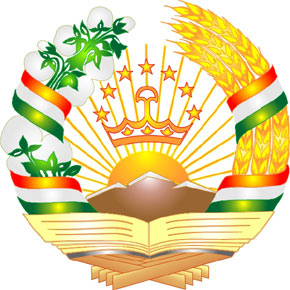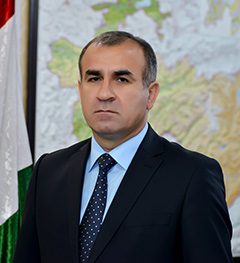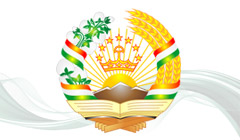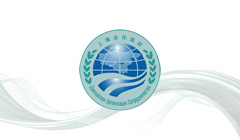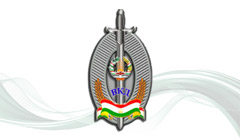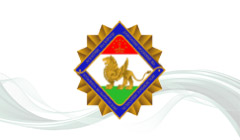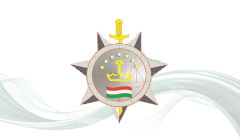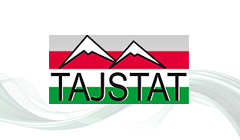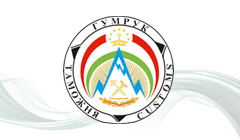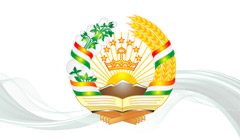История возникновения денежного обращения на территории Таджикистана восходит к глубокой древности.
Древнейшими монетами обнаруженными на территории Таджикистана были ахеменидские золотые дарики, (VI и V вв. до н.э.), представленные в знаменитом Амударьинском кладе, обнаруженном еще в 1878 г. в Кабадиенском районе.
Древняя Бактрия и Согд, куда входили территории нынешнего Таджикистана, составляли важную часть Ахеменидской империи и были включены в орбиту древней международной торговли между Востоком и Западом.
Денежное обращение на территории Таджикистана получило дальнейшее развитие при Александре Македонском и Селевкидах ( IV - середина III в.в. до н.э). Примечательно, что при Антиохе I в начале III в. до н.э. в Бактрии функционировал монетный двор, который выпускал крупные серебряные монеты (тетрадрахмы) с именем и портретом царя.
Подлинный расцвет денежного обращения на территории Таджикистана в древности относится к греко-бактрийскому периоду (III- II вв. до н.э.).
При Кушанах денежное обращение продолжало развиваться и приобретало новые местные черты. Монеты тех времен были отчеканены из золота, серебра и меди. На территории древнего Таджикистана найдено более 20 кладов кушанских монет.
На кушанских монетах преобладали сюжеты, связанные с зароастрийской религией. В тоже время кушанские цари проводили умеренную веротерпимую политику и помещали на своих монетах изображения индийского бога Шивы, а также Будду. Они объединяли воедино разные народы и культуры, которые мирно сосуществовали и успешно развивались.
В средные века денежное обращение достигло своего наивысшего рассвета при первом централизованном государстве таджиков Саманидов в IХ-Х вв.,когда более чем в 30 городах Мавераннахра и Хорасана функционировали монетные дворы.
Саманидские дирхемы обращались не только в пределах этого государства, но и далеко за его пределами.
Дальнейший рост денежного обращения Средней Азии связан с эпохой Тимуридов (ХV в.).Крупные клады медных тимуридских монет найдены в .Душанбе, Худжанде, Гиссаре, Регаре и в других местах.
Чеканка монет продолжалась на территории Средней Азии вплоть до 1920 г.
К концу правления последнего эмира Бухары Саид Алимхана приходится выпуск в обращение первых бумажных денег на территории Средней Азии, которые назывались "танга" по подобию существовавших серебряных монет.
Были выпущены в обращение купюры номиналом 20, 50, 100, 300, 500, 1000, 2000, 5000, 10000 танга.
В сентябре 1920 г. на территории эмирата была образована Бухарская Народная Советская Республика, которая продолжала выпускать те же эмирские банкноты с не большими изменениями, в том числе на лицевой стороне банкнот в верхнем круге надпись "Выпущен по указу Его Величества" была заменена на советскую символику - изображение серпа и снопа пшеницы. Были также заменены названия и имена должностных лиц . Все надписи на этих деньгах были исполнены на таджикском языке.
На территории современного Таджикистана банковских учреждений, как таковых до 1925 года не существовало.
Необходимость открытия самостоятельного банковского учреждения возникла с образованием Таджикской Автономной Советской Социалистической Республики (1924г.).
В мае 1925 г. было объявлено о создании Душанбинского позднее Таджикского республиканского подразделения Госбанка СССР.
Формирование современной банковской системы стало возможным после обретения Таджикистаном независимости (9 сентября 1991 г.) и образования Национального банка Таджикистана.
Несмотря на то, что Республика Таджикистан приобрела независимость в 1991 году, на территории республики до конца 1993 года находилась в обращении валюта периода Советского Союза, а затем с 1 января 1994 года - наличная валюта Российской Федерации.
Таджикистан среди независимых республик бывшего СССР оставался единственной страной, где до мая 1995г. продолжали хождение рубли Российской Федерации. Это обстоятельство породило целый ряд серьёзных социально-экономических проблем: неуклонно возрастал внутренний долг республики из-за нехватки наличных денег для выплаты заработной платы, пенсий и пособий; практически прекратилось финансирование экономики; наконец, Национальный банк Таджикистана был лишен возможности проводить свою независимую денежно-кредитную и валютную политику.
Решение этих и других проблем диктовало необходимость ввода собственной валюты.
Таким образом, в целях реализации более эффективной экономической политики, ускорения экономических преобразований и создания денежной системы Таджикистана, по личной инициативе и при поддержке Президента Республики Таджикистан уважаемого Эмомали Шариповича Рахмонова было принято решение о вводе национальной валюты Таджикистана.
Постановлением Государственной комиссии Республики Таджикистан по введению национальной валюты от 6 мая 1995 года № 8 (324) "О порядке введения в обращение на территории Республики Таджикистан национальной валюты - таджикского рубла", с 10 мая 1995 года были выпущены в обращение национальная валюта Таджикистана - рубл, достоинством в 1, 5, 10, 20, 50, 100, 200, 500, 1000 рублов, образца 1994 г. эмитируемая Национальным банком Республики Таджикистан.
Введение в обращение национальной валюты, проходившее при содействии Международного Валютного Фонда имело важное экономическое значение для дальнейшего развития республики и стало политическим, экономическим, социальным и культурным явлением.
Находясь в обращении более 5 лет эта денежная единица сыграло огромную роль в создании основ экономической независимости страны и подготовила необходимые условия для начала функционирования новой подлинно национальной денежной единицы.
Со стабилизацией политической и экономической жизни страны Национальный банк Таджикистана в 1999 году поместил заказ на предприятии Giesecke & Divirent (Германия) на изготовление национальной валюты, символизирующей историческое прошлое и современную культуру таджикского народа.
Указом Президента Республики Таджикистан от 26 октября 2000 года № 415, было объявлено о введении с 30 октября 2000 года новой денежной единицы страны - "сомони", названной в честь основателя первого централизованного государства таджиков Исмоила Сомони (849-907 гг.), в обращение были выпущены банкноты достоинством в 1,5, 10, 20, 50, 100 сомони и разменная единица достоинством в 1, 5, 20, 50 дирам.
На купюрах новой валюты помещены портреты выдающихся деятелей современности и прошлого таджикского народа, а также изображеныя архитектурных и исторических памятников Таджикистана, предметов прикладного искусства и быта таджикского народа.
В целях совершенствования структуры денежной системы республики Указом Президента республики Таджикистан № УП - 645 от 28 августа 2001 года с 3 сентября 2001 г. были введены металлические монеты достоинством 1, 3, 5 сомони и 5, 10, 20, 25, 50 дирамов, эмитируемые Национальным банком Таджикистана. Эты монеты были отчеканены на предприятиях Санкт-Петербургского Монетного Двора Российской Федерации. Было установлено, что металлическая монета будет иметь параллельное хождение с банкнотами аналогичного достоинства.
Национальная валюта, имеющая в зоне обращения достаточный авторитет, стала достойным символом независимого Таджикистана и служит надежным инструментом регулирования развивающейся экономики нашей страны. Сегодня сомони является одной из устойчивых валют в СНГ, что привлекает внимание финансовых кругов соседних государств.
В ноябре 2004 г. выпущены в обращение первые памятные монеты Таджикистана: монеты достоинством 5 сомони, посвященные 10-летию принятия Конституции Республики Таджикистан и монеты достоинством 3 сомони, посвященные 80-летию столицы Таджикистана г. Душанбе. Эти монеты отчеканены в двух вариантах - из серебра и сборного материала (латунь и мельхиор). Монеты из сборного металла находятся в денежном обороте страны.


